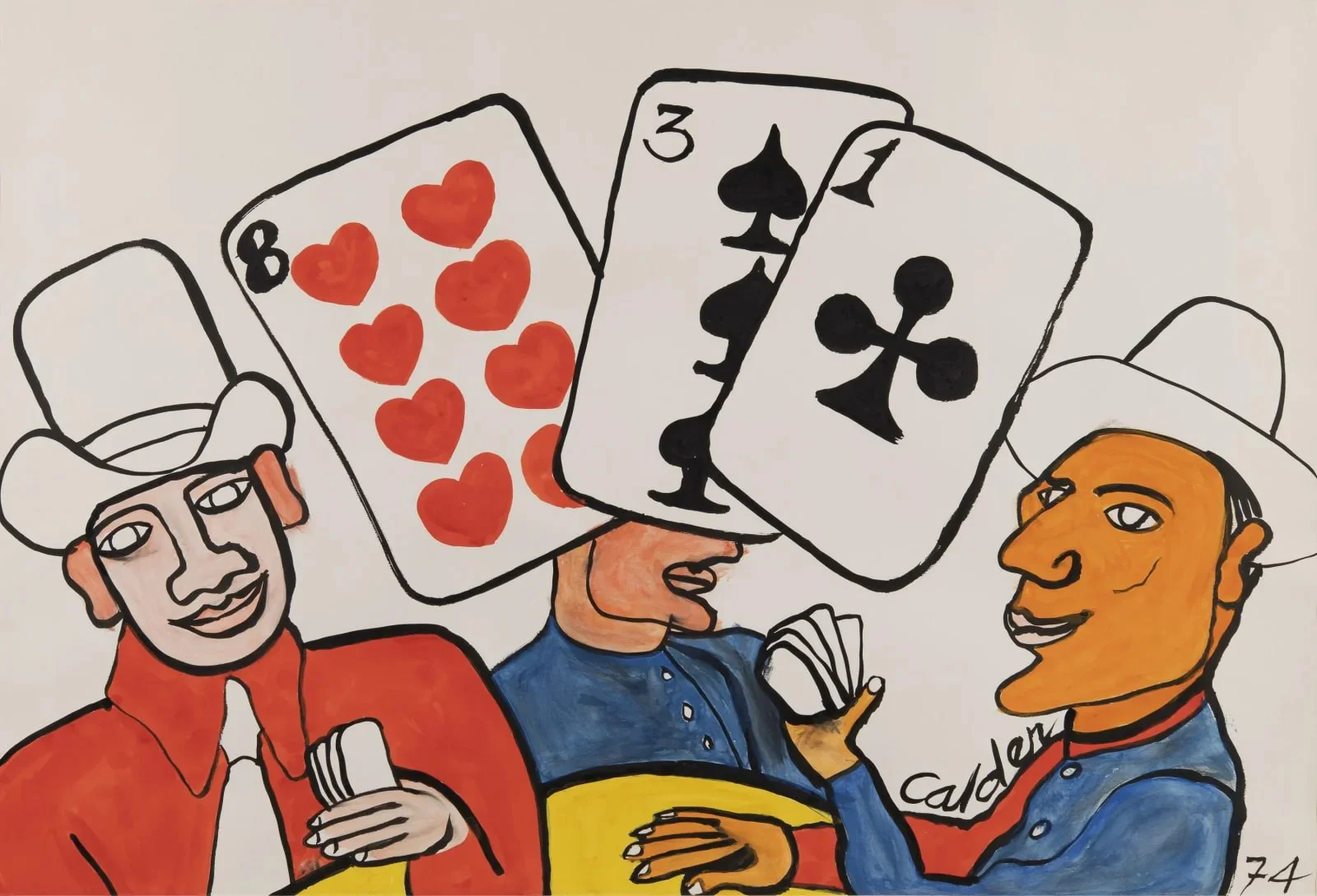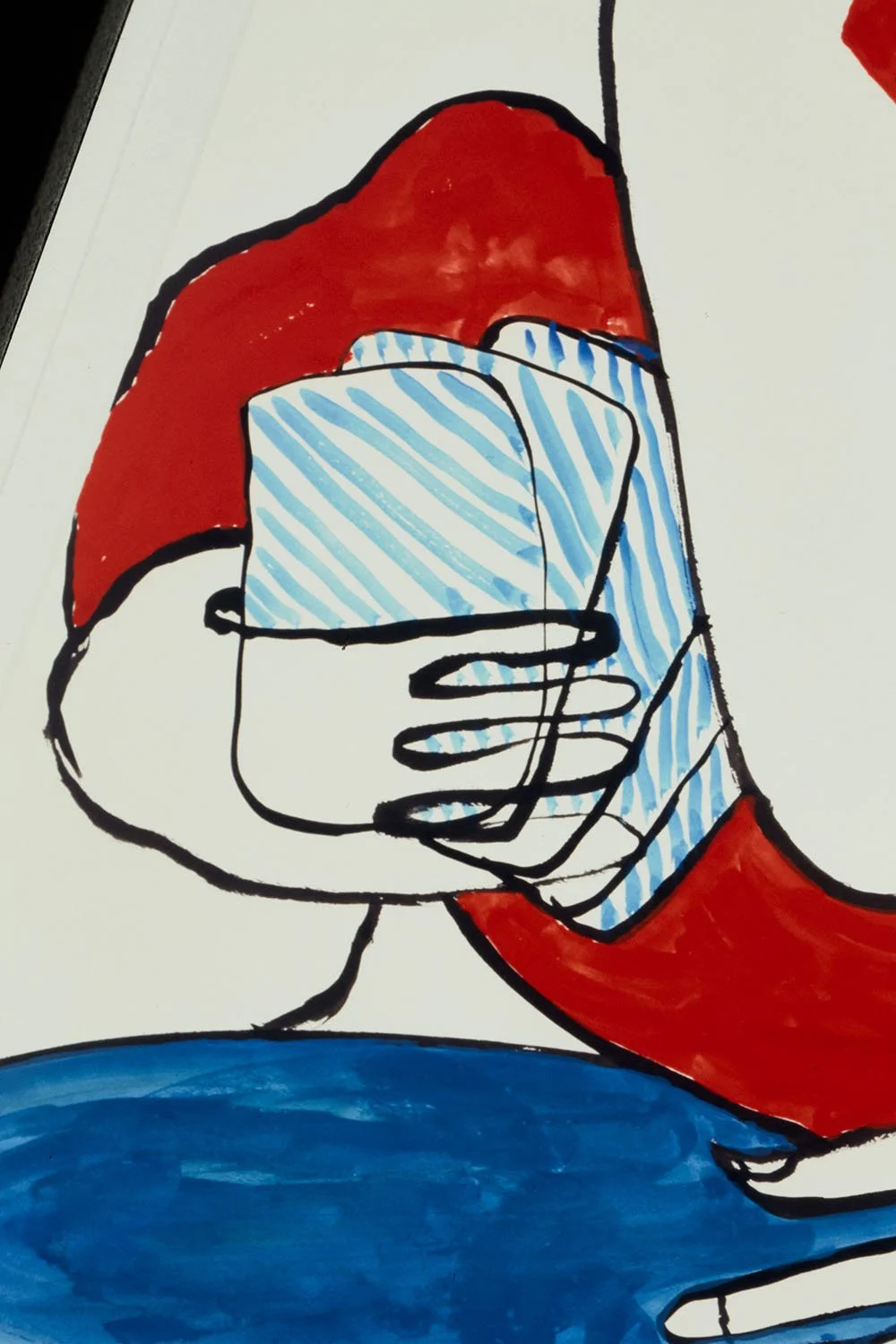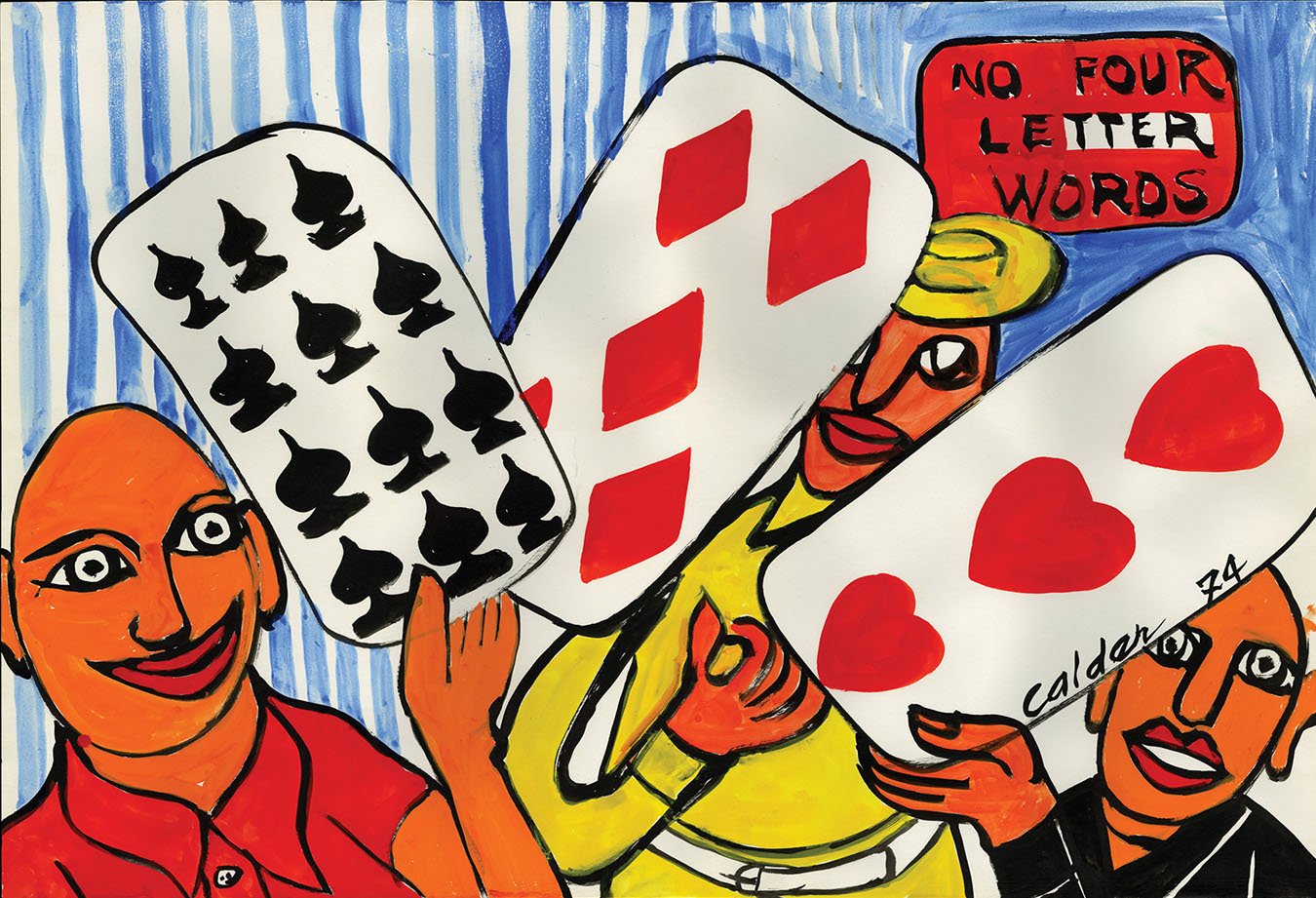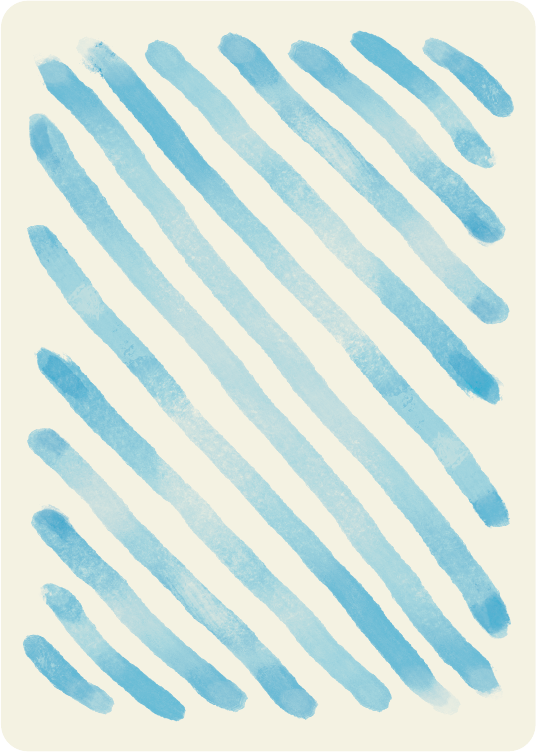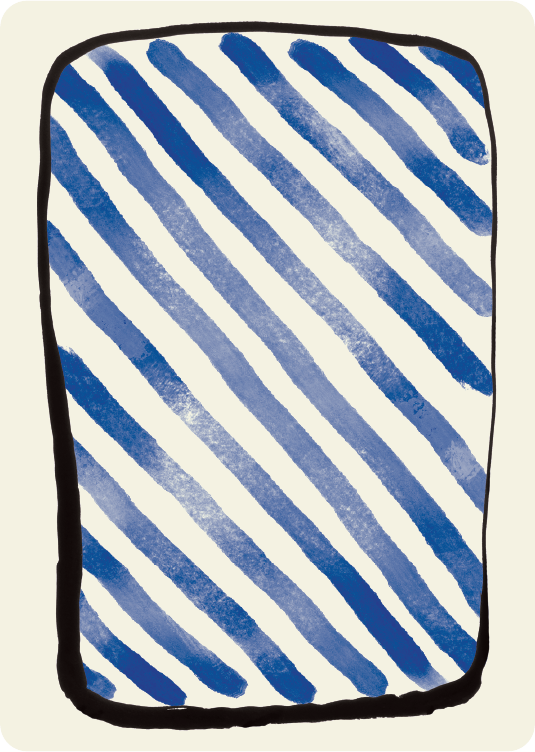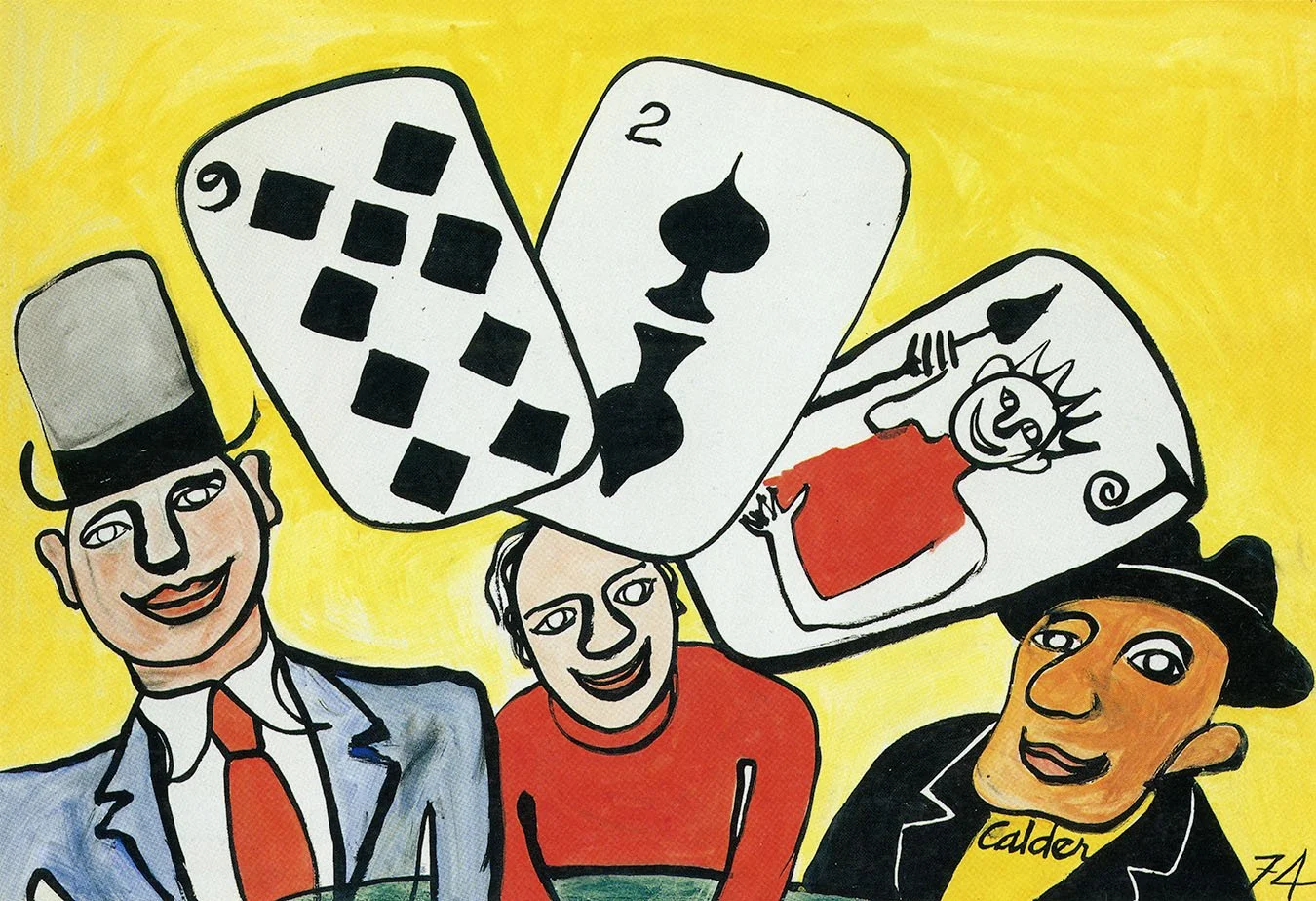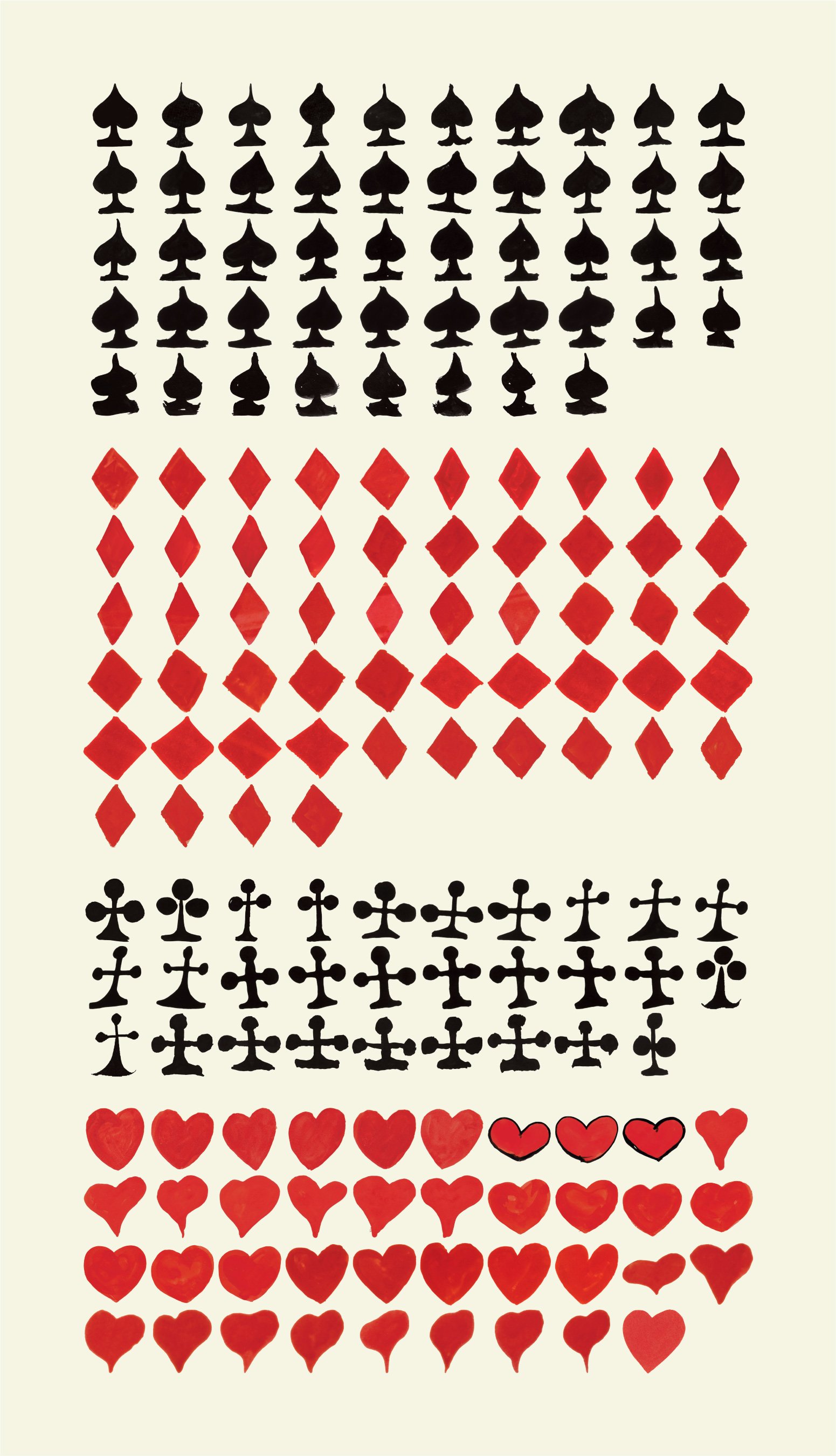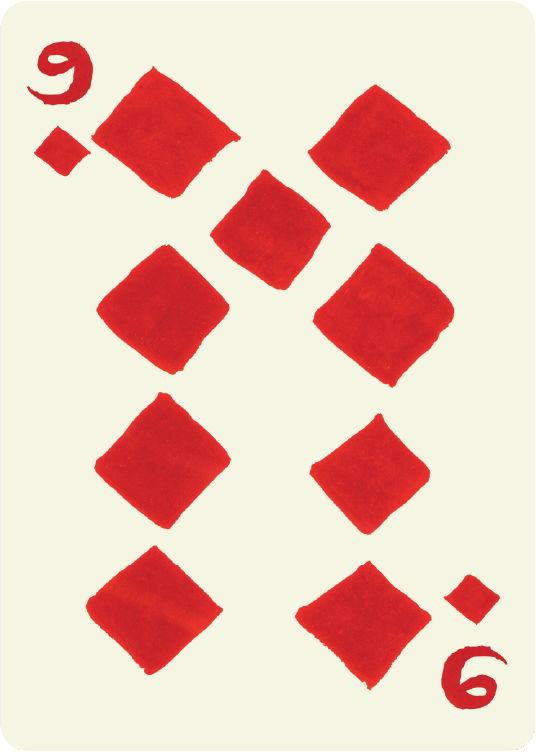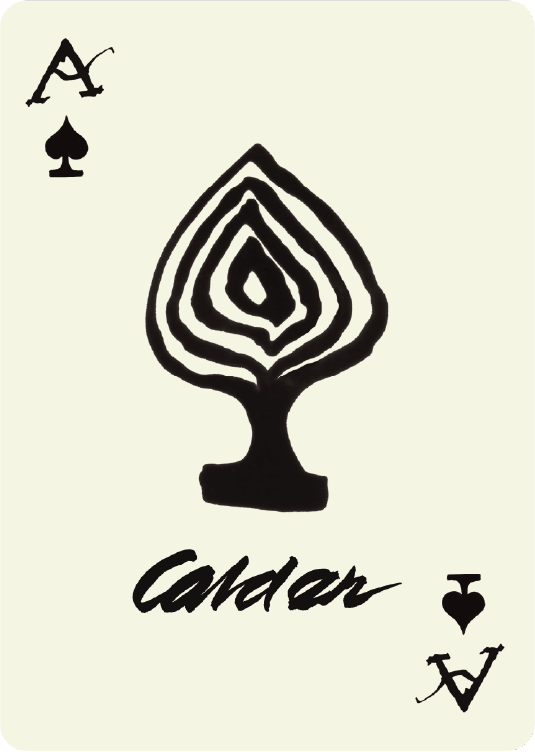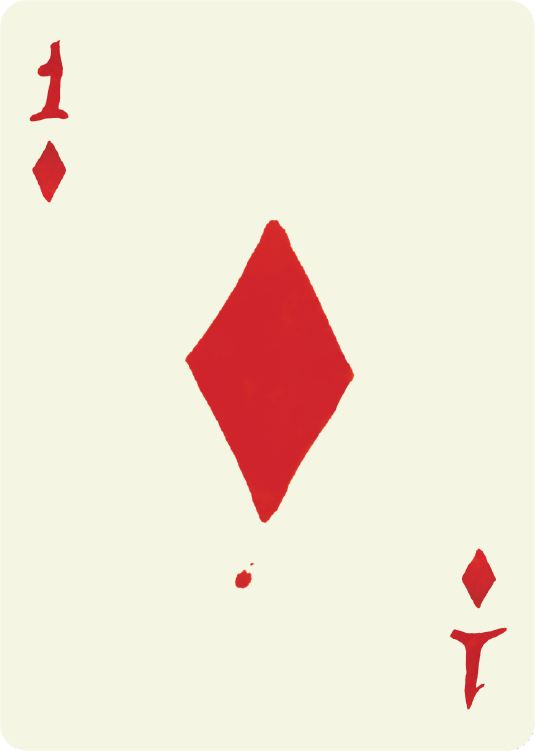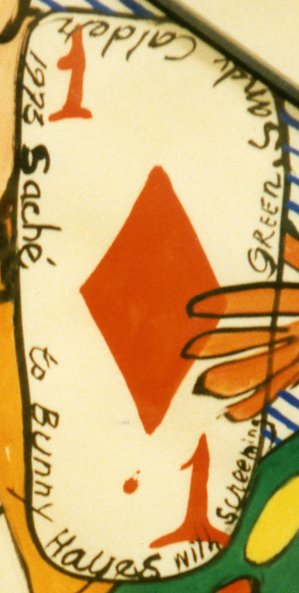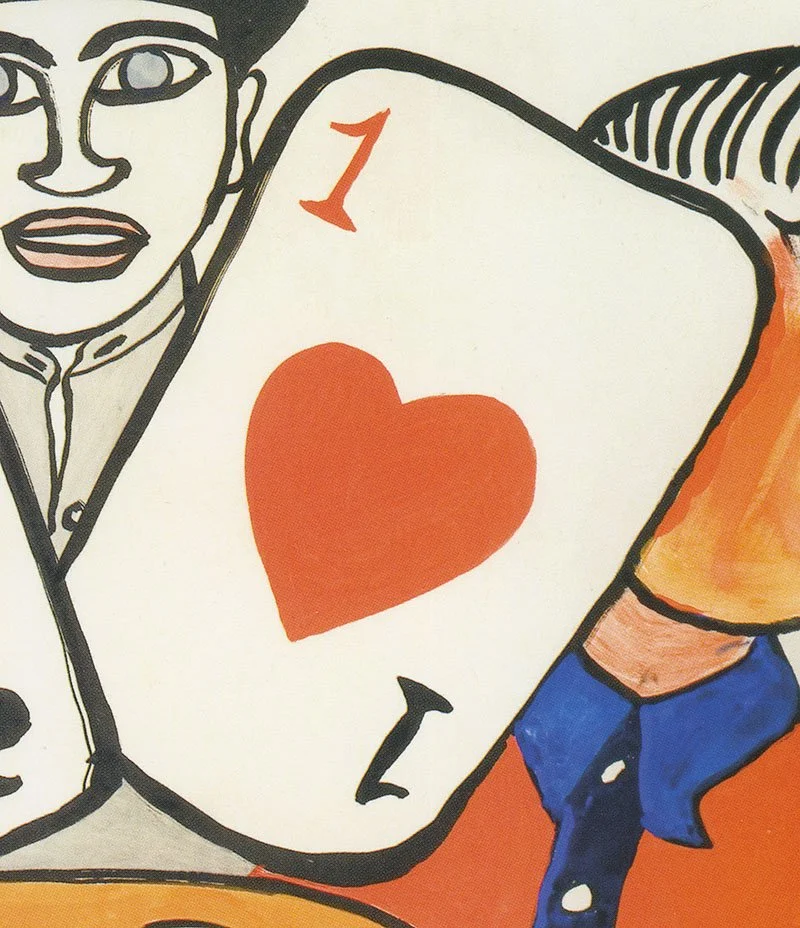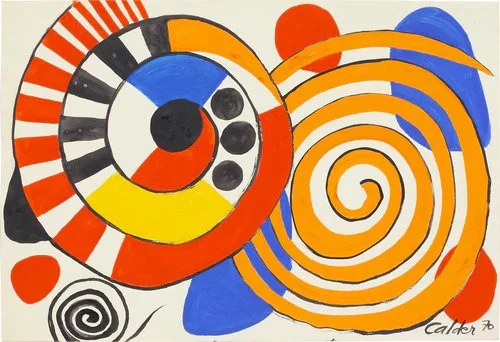ORIGINAL CALDER ARTWORK:
CALDER PLAYING CARDS
THE ASK:
Create a deck of playing cards that celebrates the enduring legacy of Alexander Calder, inspired by his vivid gouache paintings from the 1970s.
BACKGROUND:
Alexander Calder was one of the most influential artists of the twentieth century, known for creating mobiles—moving sculptures—and large static works. He also painted several pieces, including the Card Player series. These gouache paintings show stylish poker players at a card table, with large cards floating around them. Calder Playing Cards are based on this series.
SUMMARY:
To create this deck, I clipped, refined, and assembled each letter, number, and suit from Calder's Card Player series onto traditional playing cards. Whenever I could, I stuck to Calder's original layouts; but since he didn't paint every single card, I had to construct many using the clipped assets, arranging them to match his style. The back of the cards features a thick black outline and blue striping taken directly from Calder’s gouaches. The original artwork lacked court cards, so I borrowed faces from another series of Calder's gouaches from around the same time for the Jack, King, and Queen. The final result blends Calder's playful artistry with traditional playing card design.
ACKNOWLEDGMENTS:
Original Artwork — Alexander Calder
Creative Direction — Dan Buck, Brad Fulton
Product Photography — Art of Play
01. BACK DESIGN
To create the back design, I pieced together parts from three different Calder gouaches. The blue striping was extracted from one, the border from another, and I used a third as a color reference. I was provided with the first draft, from there I clipped and incorporated the border while refining the colors to closely mirror Calder's original blue gouaches.
ORIGINAL STRIPING:
ORIGINAL BORDER:
COLOR REFERENCE:
DRAFT 01:
DRAFT 02:
FINAL BACK DESIGN:
02. PIPS/VALUES
I carefully pulled out every letter, number, and suit from Calder's original gouaches, which spanned over forty paintings. I got rid of dust and scratches, fixed up the colors, and refined each one so they all fit together visually as a cohesive set. After that, I arranged them onto traditional playing cards, making sure to stay true to Calder's original style and layout whenever I could.
ORIGINAL CALDER ARTWORK:
CLIPPED & REFINED PIPS:
CLIPPED & REFINED VALUES:
ORIGINAL TO FINAL DESIGNS:
03. ACES
Similar to the pips and values, I snagged the aces from four different Calder paintings. They follow the European style, with a numerical value of “1”. As a nod to Alexander, the Ace of Spades has an "A". I had to rebuild part of the large spade since it was missing from the original scan, and I also did some basic cleanup on the others.
ORIGINAL TO FINAL DESIGNS:
FINAL ACES:
04. COURT CARDS
Since there weren't any court cards in the original gouaches, I got faces for the Jacks, Queens, and Kings from another batch of Calder's paintings created during the same time period. All the letters are in Calder’s handwriting, taken straight from his original paintings. I refined each symbol/motif again, sometimes having to fix certain parts, before putting them in the deck.
ORIGINAL CALDER ARTWORK:
FINAL KING OF DIAMONDS:
ORIGINAL CALDER ARTWORK:
FINAL KING OF HEARTS:
FINAL COURT CARDS:
05. ASSEMBLY/PREPRESS
The last thing I did was bring together all the design elements, making sure they worked well with each other and maintained a consistent style throughout the whole deck, so it felt like one cohesive piece. After that, I did some basic prepress work to get the deck ready for print.
SPADES DIELINE:
DIAMONDS DIELINE:
CLUBS DIELINE:
HEARTS DIELINE:
BACK, JOKERS, AND EXTRA CARDS DIELINE:
Last Look
EXPLORE MORE
MOTIONFOLIO
01. Grotto Network
02. Herman Miller
03. Flux Digital
04. International Association
for Cross-Cultural Psychology



